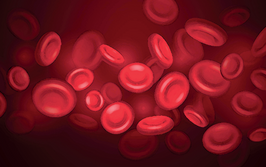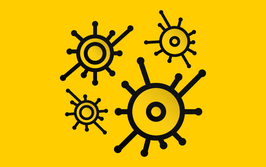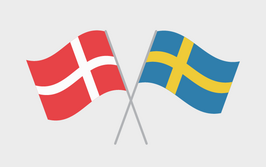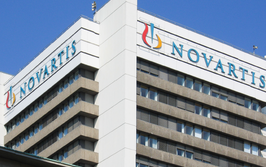Controlling Crystallization
Researchers working to gain greater knowledge into crystallization believe that functionalized glass can trigger nucleation of specific crystals.
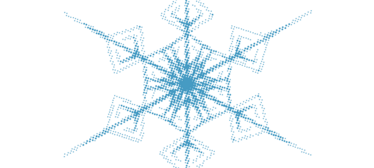
Polymorph control in pharmaceutical crystallization is mainly ensured by seeding the solution with the desired crystal form and by operating the process at a preset solute concentration. However, variations in the properties of seed crystals and solution conditions can, at times, result in crystallization of unwanted polymorphs. Jerry Heng, a senior lecturer in the Department of Chemical Engineering at Imperial College London, UK, and his team have been working to improve their understanding of selective nucleation of polymorphic forms on different chemically-modified surfaces – and have developed a template-induced crystallization process to improve reproducibility (1). We spoke with Heng to find out more.
What inspired your recent work?
In one of our previous studies on polymorphism of mannitol crystals, it was found that the surface of a stable polymorph could initiate the nucleation of a metastable polymorph under specific conditions. Generally, observations suggest the transformation of metastable polymorph into stable polymorph over time. However, this peculiar observation demonstrated that surface-induced nucleation is a probable method for controlling nucleation of a desired polymorph. This inspired us to further investigate the surface-induced nucleation process. The primary aim of the project was to investigate the impact of different surfaces on nucleation of different polymorphic crystals, and then to engineer surfaces that can produce required polymorph.
In previous work, we have also examined the role of engineered 3-dimensional nucleants to enhance nucleation of biological macromolecules, such as proteins, and showed that porosity is important. In this particular work, our focus was on the chemical nature of the interface and its ability to preferentially nucleate different polymorphic forms of the same active pharmaceutical ingredient (API). We hypothesized that interfacial interactions between the nucleant and crystallizing system were crucial in terms of affecting crystallization output.
How was glass involved?
Many researchers have reported that special glasses have the potential to nucleate crystals of therapeutic proteins. However, we have demonstrated that even a normal glass surface (when modified through surface treatments) can trigger nucleation of specific crystals. It has to be noted that the nucleant substrate is not limited to glass; any substrate whose surface chemistry could be modified through different chemical techniques could potentially be used as a nucleant substrate. To understand the mechanism of this interfacial effect of the nucleation, computational molecular modeling methodology was adopted. The efficiency of a surface in hetero-nucleating a specific crystal polymorph is usually associated with structural complementarity (vis-à-vis epitaxy) between the surface and the crystal nucleus. However, contrary to this notion, our study has shown that intermolecular interactions between the template surface and the crystalline phase impact the polymorphic outcome.
Calculations using template surfaces with different functional groups showed that the overall interaction energy between prenucleation clusters and template surfaces varied. Interfacial interactions could induce or hinder surface nucleation based on overall favorable or unfavorable interactions. Thus, when different template surfaces that exhibit different chemical functional groups are exposed to a crystallizing solution, each template might induce or hinder template-induced nucleation of specific polymorphs.
What were the most surprising findings?
Out initial experimental results supported the hypothesis that surface chemistry of templates had a significant influence on nucleation of specific polymorphs. However, later experiments under different conditions showed varying degree of preferential nucleation on template.
When the results were plotted on a phase diagram, we found that template-induced polymorphic domains (TiPoDs) can occur in the phase diagram, where template-induced nucleation is a significant factor that determines polymorphic outcome. Beyond the domains, the impact of templates decreases and other factors influencing crystallization take over. TiPoD plots for various template chemistries concluded that the surface chemistry of the template can influence the nucleation and formation of specific polymorphs of carbamazepine (the drug we experimented with) within a certain concentration range of supersaturated solutions. The presence of specific domains indicates that there is a delicate interplay between surface interactions, solution conditions and thermodynamics in template-induced nucleation process.
Could glass affect the efficacy of a drug in patients?
Surface-functionalized glass substrates can influence the nucleation of specific crystal polymorphs. Even though the nucleant templates are not incorporated into the drug during any stage of crystallization, the nucleants will indirectly affect the drug properties by regulating polymorph generation. Metastable polymorphs generally exhibit a higher rate of dissolution and bioavailability than stable polymorphs due to a difference in thermodynamic energy. Thus, a template-induced nucleation process can be used to produce crystal polymorphs that are otherwise difficult to form.
What implications do your results have for pharma manufacturers?
Crystallization is a common process undertaken in the pharma industry to produce drug particles. The precise control of crystallization conditions and seeding of crystals are two common approaches that manufacturers undertake to ensure polymorphic purity and batch-to-batch product consistency. However, studies have suggested that the outcome of a crystallization process is dependent on what I call a “crystallization triangle” – consisting of solvent conditions, nucleation initiators, and process conditions (including stirring, geometry of vessel, flow pattern, etc.) of the system. Our study addresses the lack of information in the sphere of nucleation initiator for controlling crystallization process. With further development of our results, the approach could be used by manufacturers to have additional control over the crystallization process to improve the predictability of crystallization outcome and ensure product consistency. The molecular modeling calculations outlined in our study could be used for predicting the propensity for preferential nucleation on new engineered surfaces.
What is the next step for this work?
Building on our current work, there are a few avenues that we are planning to explore. Firstly, we’d like to develop design rules to engineer new templates for other crystallization systems, which would make the approach easily acceptable and applicable for newer drugs. This would also include a demonstration of the applicability of template-induced nucleants for polymorph screening of new APIs and excipients – and the application of knowledge on interfacial interactions on selecting the most appropriate seed configurations. Secondly, the impact of other processing conditions, such as hydrodynamics of the crystallizing system in relation to template-induced nucleation process, needs to be studied for scale up of the bench-scale experiments to large-scale production process. Thirdly, incorporating the concept of template-induced nucleation for the development of next generation therapeutics, including biomacromolecules, will be necessary in the future.
The crystallization of pharma ingredients has been studied for decades (costing several millions of dollars). However, a delicate balance of several influencing factors makes the process of crystallization a difficult problem to deal with. Newer techniques, such as the template-induced nucleation described in our study, require further research to enhance the efficiency of the crystallization process.
Since crystallization is commonly adopted by a number of industries, such as pharmaceuticals and agrochemicals, the sharing of experience and knowledge across different fields will help to accelerate the development of specific crystallization methods. Through industry-academia interactions, interdisciplinary collaborations and appropriate funding, crystallization methods can be optimized to avoid the usage of hazardous solvents and chemicals, which can be replaced by benign green chemistry to make the whole process more sustainable.
- J. Heng et al., “Establishing template-induced polymorphic domains for API crystallization: the case of carbamazepine,” CrystEngComm17, 6384-6392, 2016.


